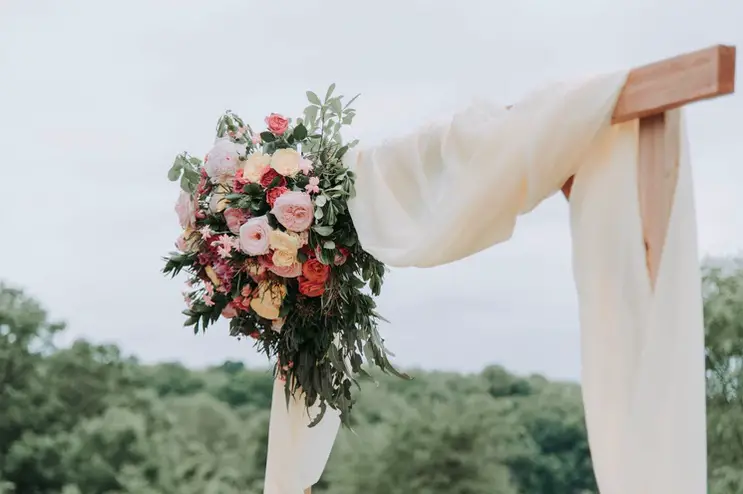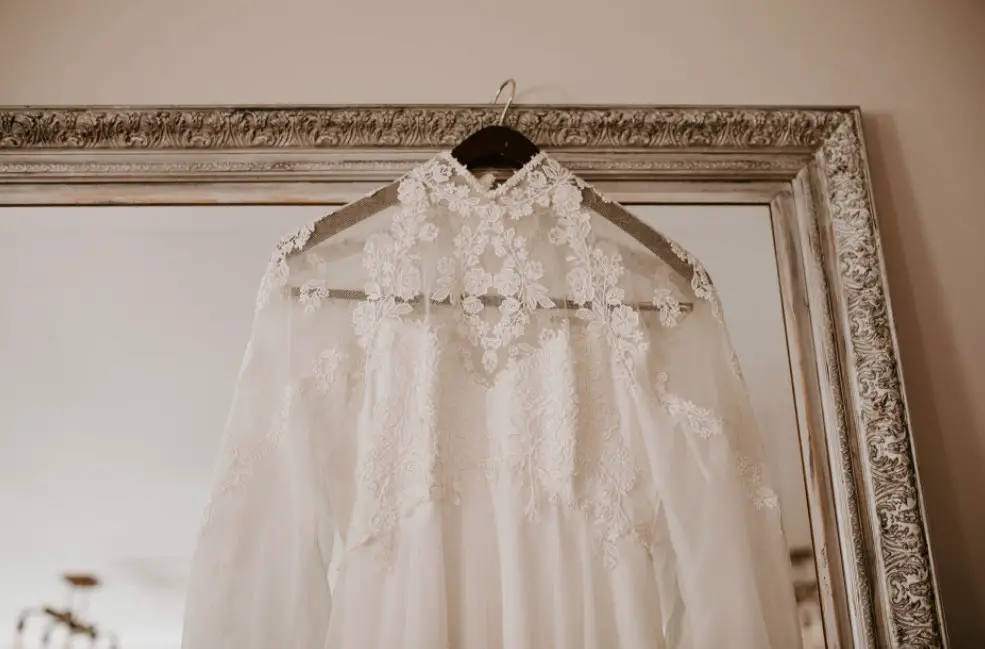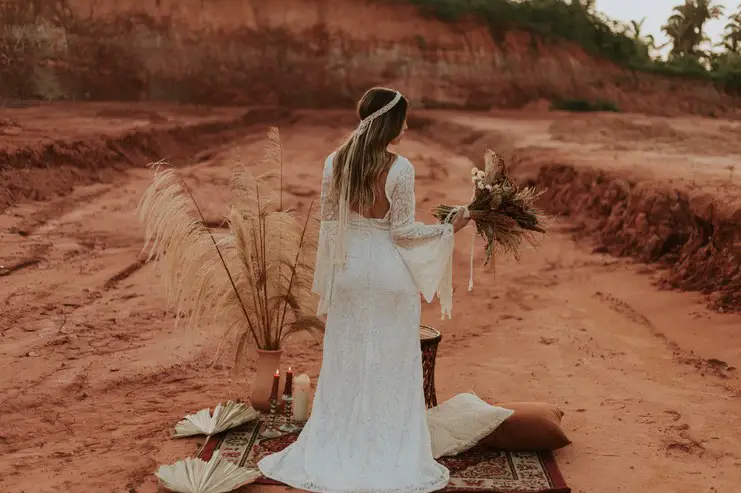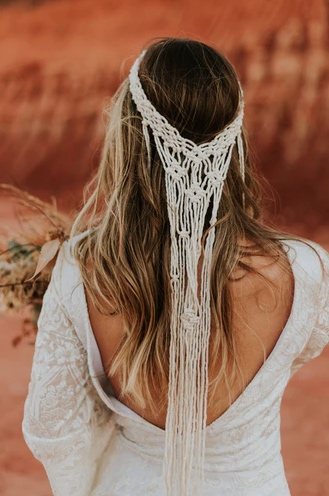Boho is an abbreviation for "bohemian." A lot of credit for the aesthetic of boho dresses goes to the pre-Raphaelite women of the late 19th century and the free-loving hippies of the '60s and '70s. Nonetheless, the bohemian culture came before the hippie culture. After it, a brand new cultural phenomenon called "hippieism" developed. Boho is all about letting your freak flag fly. It is characterised by long, flowing skirts and dresses, with or without tiers; peasant blouses; ruffled floral skirts; tunics; jewellery made from wood; embroidery; beading; fringed handbags; and jewelled or adorned flat shoes. The dresses had a wide variety of vivid colours. The key to achieving this style is to dress in layers.
Historically, the Roma gipsies of France were referred to as "Bohemians," as the Online Etymology Dictionary explains. Soon after, however, the phrase began to be used more frequently to describe artists who were financially unstable and whose lifestyles were not dissimilar to that of the historically oppressed Roma.
Check out our list of Wedding Dress Shops in Melbourne to help you select your ultimate gown.
From the middle of the nineteenth century onwards, those who identified with the bohemian subculture were characterised by their artistic endeavours, their defiance of social mores, and their financial hardships. Bohemian culture was frequently accompanied with a life of constant movement and political rebellion. Poverty-stricken Bohemians in Paris's Latin Quarter were the focus of Puccini's opera La bohème. The name eventually made its way to every major city in Europe and even the United States, where it was occasionally used to describe a wide range of subcultures.

Bohemian style is a kind of hippie fashion characterised by the use of natural fibres, vintage patterns, neutral and warm tones, and an eye for eye-catching accessories.
Bohemian culture is more than just a passing fad; it has a distinct ideology and a convoluted background that informs its aesthetic choices and practises. Even though bohemian style was popularised by hippies in the 1960s and 1970s, it has since entered the mainstream. However, bohemian style had its roots in the 19th century counterculture. Boho fashion has become a cultural phenomenon thanks to the availability of a wide range of articles of clothing and accessories in the style. Boho is characterised by a lack of strict tailoring, an emphasis on comfortable, casual wear, and an emphasis on the expression of the wearer's individuality through a deliberate combination of disparate elements.
The bohemian aesthetic is a social attitude against consumerism and societal limitations, and the styles associated with this ethos are a reflection of this idea.
Boho style relies on a lack of standards and the reverse of neatness and precision. It's meant to convey a laid-back, natural vibe, as if the pieces were put on without any consideration. Boho-chic style is characterised by a variety of factors, including intricate embroidery, thick knits, scarves, etc.
The story of the first bohemians is quite fascinating. The emergence of bohemians in France follows the country's revolutionary period. They were referred to as gipsies and Romani. Most of them had fled their native Bohemia in central Europe.
The modern definition of a gypsy includes those who identify as punk, rock, and otherwise eccentric keeps it edgy and classy by dressing up in style and ease.
Bohemians are drawn to places where they can freely express themselves and save money. Bohemians are defined by their poverty and inability to turn back the clock. Since their cost of living is low and their community values free speech, it is clear why they prefer to settle there.
The bohemian way of living is unconventional. It's all because of their abilities and original thoughts.
There is a lot of carelessness and chaos among those who identify as bohemian. They don't stick to any sort of schedule. Without any sort of structure or regularity in their daily lives, they float from one thing to the next. They are nomads at heart, always on the lookout for new experiences. They are bursting at the seams with creative energy and a natural talent for the arts.
A true bohemian spreads love, not conflict. They look down on those who have a "war mentality," disregarding the very idea of war itself. They have a strong reputation for their contributions to the creative and intellectual worlds.
Due to their economic status, they favour wearing old or secondhand dresses that stand out due to their bright colors. Bohemian style dresses are vibrant and captivate the eye. They enjoy donning flashy accessories, such as chunky necklaces, dangling bracelets, and cool headwear.
They are renowned to live healthy lifestyles while leading very unstructured and unpredictable lives. Due to their continued concern about their weight, they have adopted a plant-based diet. Most people in the bohemian community ate vegan because it fit with their healthy lifestyle and gave them more energy.
Boho aesthetics are deeply rooted in philosophy, mysticism, and mythology. It holds that one can make a lasting impact on the world and provide for one's family if one "jumps onto life's pages in full colour."
Bohemian fashion, sometimes known as "Boho-chic," has repeatedly resurfaced throughout history in revolutionary or nonconformist contexts. For more than two centuries, they've been associated with a number of different fashion details. As a general rule, they dislike the concept of having to dress in anything too confining. Clothes are often more relaxed and airy on them. Bohemian style frequently makes use of very long necklaces with many beads.
Men's clothing can also be considered Bohemian. Men's fashions get inspiration from the same sources as women's, but are less obvious in their references. For example, they might wear a pair of baggy slacks or damaged jeans with a T-shirt, sweater, or a combination of the two, with a scarf and a vest. Accessorizing with layers, caps, and rings and bracelets helps pull an outfit together.
Originally known as "bohemian style," the term "boho chic" is a portmanteau of the words "bohemian" and "chic." The term "Bohemian Homeless" (or "BoHo") is used to characterise the aesthetic associated with this movement. The French word chic, meaning "stylish" or "elegant," didn't enter English usage until the late 19th century.
Trends in boho chic clothing for kids are just as widespread as those for men and women. The laid-back style of the '60s served as inspiration for this movement.
The influence of bohemian lifestyle has gone global. Global Desi, Anita Dongre's label based in India, is known for its bohemian-inspired, print-heavy, floor-length gowns and saris. Bollywood actresses Kangna Ranaut and Kareena Kapoor Khan are known for favouring the bohemian style.
How To Dress BoHo?
The boHo style is characterised by loose, at ease garments. Loose, comfortable tops are common, and some of the most well-known examples include the peasant blouse, tunic, and prairie blouse. Dresses are typically large and flowy. Trousers, khaki shorts, harem pants, and bell bottoms are all appropriate bottoms to wear. The use of vivid colours will be minimal.
It's common to see patterned or designed items, as well as use of light or muted colours, and earth tones. Ethnic designs, needlework, and adornments like patchwork, braids, pom poms, coloured appliques, and fringe can all be found. These embellishments are also frequently found on the accessories and footwear that are commonly linked with the BoHo fashion movement.
Brown boots, wooden clogs, or simple sandals are perfect for finishing off a classic modern boho outfit. BoHo style, with its emphasis on individuality, is not a subtle one. It's not uncommon to see women carrying massive purses and accessorising with chunky, statement necklaces and bangles.

The best BoHo accessories are the ones that stand out from the crowd. Hair and makeup BoHo fashion is often associated with fashions that have a more organic aspect.
Since this is about freedom, try different things and make it your own.
These days, practically anyone can pull off BoHo style. You can embrace your inner free spirit and show the world your willingness to try new things by adding a few boho touches to your outfit. BoHo clothing is a great way to show off your free-spirited side while still looking fashionable and young.
The Romantics and French Bohemians
The Romantics and the French Bohemians became linked about the middle of the 19th century. The bands began wearing loose-fitting costumes, clothes with an eastern or mediaeval aesthetic, or made from brightly coloured materials; gypsy-inspired hairstyles and accessories; and worn-out outerwear and fabrics. Though well-liked at the moment, these specifics now seem somewhat out of step with contemporary culture fashions of the era. Check out our list of Melbourne Wedding Stylists here.
The Aesthetic Movement
Bohemian style has evolved considerably throughout time. What started as an adaptive strategy due to financial constraints has developed into a full-fledged ideological position against consumerism, in favour of communal housing, against traditional social values, and even against basic hygiene. Bohemians later took a stand during the Aesthetic Movement against the crinolines and corsets that were in style at the time. Therefore, followers of the Aesthetic Movement adopted a new way of life and a new fashion sense, placing a focus on loose cuts, hand needlework, and designs reminiscent of the Middle Ages.
The Early 20th Century Bohemian Icons
Designers in the early 20th century began modernising bohemian styles. The French designer Paul Poiret was known for fusing aspects from many cultures into his creations. Similarly, William Morris, a textile designer, developed a wide range of patterns for both internal and exterior use, including elaborate flower prints, paisley, and swirls.
The Hippie Era
In the '60s, the Bohemian Movement took on a new significance that would ultimately alter the fashion industry forever. During the zenith of the Hippie Movement, unconventional styles like as ethnic costumes, embroidery, mixed motifs, volume, fringe, and exaggerated silhouettes were widely worn. The hippies' clothing was a stark contrast to the slick, polished designs of the previous decade, reflecting their rejection of common wisdom, capitalism, and social norms.
A capsule wardrobe that includes essential bohemian pieces is a wonderful place to begin if you're interested in creating a bohemian style wardrobe. You can get by with no more than 20 versatile, necessary things. Because, the reality is, the good news about adopting the bohemian route is that practically everything matches everything. From tops to bottoms and from outerwear to accessories and one-pieces, here is our example capsule collection to help you get started.
BoHo style is characterised by many distinguishing features and components. It's a loosely defined fashion movement characterised by a wide range of retro-chic, hippie-inspired garments and outlandish, individualistic accessories. Similar to any other fashion, BoHo as the fashion industry has developed and diversified throughout time, a wide range of looks that fall under the umbrella term "BoHo" have emerged.

London's streets are reflecting the current trend of a return to the bohemian aesthetic seen in the most prestigious fashion brands. The Bohemian style includes several current trends that can be worn year after year and for a variety of events. Nowadays, the bohemian lifestyle is more than just a fashion statement; it's a complete way of life.
Conclusion
The use of natural fibers, vintage patterns, neutral and warm tones, and an emphasis on statement accessories define the Bohemian style of hippie fashion. Aesthetically, boho dresses can be traced back to late 19th-century Pre-Raphaelite women. The widespread availability of clothing and accessories in the bohemian aesthetic has contributed to the fashion's meteoric rise to prominence in popular culture. Many elements, such as elaborate embroidery, chunky knits, scarves, etc., define the boho-chic aesthetic. An authentic bohemian is someone who spreads love, not hate.
A "war mentality" is looked down upon, and the concept of war itself is disregarded. Bohemian style, also known as "Boho-chic," has frequently reemerged in revolutionary or countercultural movements throughout history. Loose, comfortable clothing is a hallmark of the boHo aesthetic. Bohemian aesthetics and values have spread around the world. Kangna Ranaut and Kareena Kapoor Khan, two famous Bollywood actresses, are often pictured wearing clothes in the BoHo aesthetic.
Embrace your inner nomad by accessorising with boho touches. The Bohemian Movement of the 1960s had an impact on the fashion industry that would last for decades to come. Ethnic costumes, embroidery, mixed motifs, volume, fringe, and exaggerated silhouettes were all widely worn at the height of the Hippie Movement. Clothing and accessories in the bohemian style can range from retro chic to hippie-inspired to downright bizarre. The bohemian aesthetic popularised by some of the world's most lauded fashion houses can be seen on the streets of London right now. The Bohemian aesthetic goes far beyond mere clothing; it encompasses an entire way of life.
Content Summary
- Shortened form of "bohemian," or "boho."
- Many '60s and '70s hippies, as well as late-19th-century pre-Raphaelite women, are credited with inspiring the look of boho clothing.
- Bohemian culture, nonetheless, before the hippie culture.
- But the counterculture of the nineteenth century was the true inspiration for the bohemian look.
- Veganism was widely practised in the bohemian community as a means to maintain a healthy lifestyle and increase vitality.
- The Bohemian style can also be seen in men's attire.
- Anita Dongre's Indian fashion house, Global Desi, is famous for its bohemian-inspired, print-heavy, floor-length gowns and saris.
- Kangna Ranaut and Kareena Kapoor Khan are two Bollywood stars who are recognised for their love of bohemian fashion.
- Over time, the bohemian aesthetic has seen several changes.
- Bohemian Icons of the Turn of the Century
- Fashion designers in the early 20th century began updating bohemian looks.
- The Bohemian Movement of the 1960s had an impact on the fashion industry that would last for decades to come.
- Ethnic clothing, needlework, eclectic themes, volume, fringe, and exaggerated silhouettes were all commonly worn at the height of the Hippie Movement.
- If you want to start building a bohemian-style wardrobe, a capsule wardrobe that incorporates the basics is a great place to start.
- Here is a sample capsule collection that includes everything from tops to bottoms, outerwear to accessories, and one-piece swimsuits to runway.
- The BoHo aesthetic is defined by its many signature elements.
- A wide variety of retro-chic, hippie-inspired garments and outlandish, individualistic accessories are typical of this fashion trend, which is only loosely defined.
- As with any other style, BoHo encompasses a wide variety of looks thanks to the ever-evolving and ever-expanding fashion industry.
- The bohemian aesthetic popularised by some of the world's most lauded fashion houses can be seen on the streets of London right now.
- Bohemian fashion incorporates several seasonal fashions that are appropriate for all seasons and occasions.
- The bohemian aesthetic is now more than just a passing fad; it encompasses a whole way of life.
FAQs About Boho Culture
The bohemian lifestyle is adopted by a part of the Parisian artistic community. This group of artists disavows the conventional lifestyle of society. Instead, they seek inspiration from the nomadic and joyful lifestyle of the gypsies of the Bohemian region
Boho is inspired by people who choose to lead an unconventional life such as constant travelers, actors, and writers. The Bohemian style mirrors that life by combining objects, colors, and patterns from many areas of the world.
Bohemian style comes with a long history, with its aesthetic originating in the late 60s and 70s. Also called 'boho chic' or 'boho', the style features a variety of natural materials, earthy shades and hippie-inspired patterns.
Colorful Boho Living Room. Classic bohemian style thrives on the brightest colors you can bring. Oranges, yellows, and reds thrive here with a plethora of patterns to boot. Warm colors work so nicely and you can combine different shades of them together too.
Boho style is a free-spirited aesthetic that mixes different cultures and artistic expressions into an eclectic style with an emphasis on organic elements and nature. When putting together your boho style space, mixing patterns, metals, woods, materials, animal hides and trinkets from your travels is highly encouraged.

